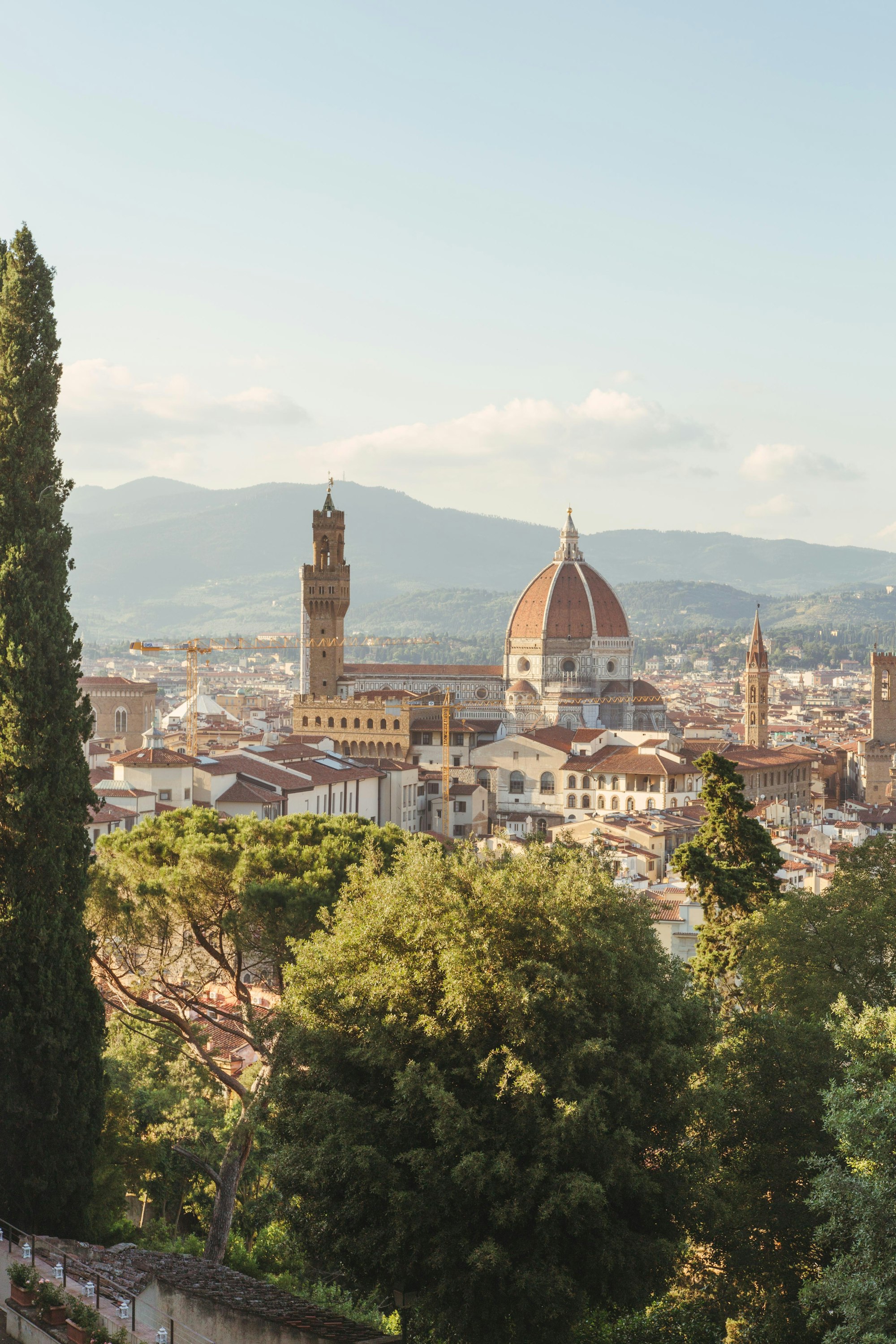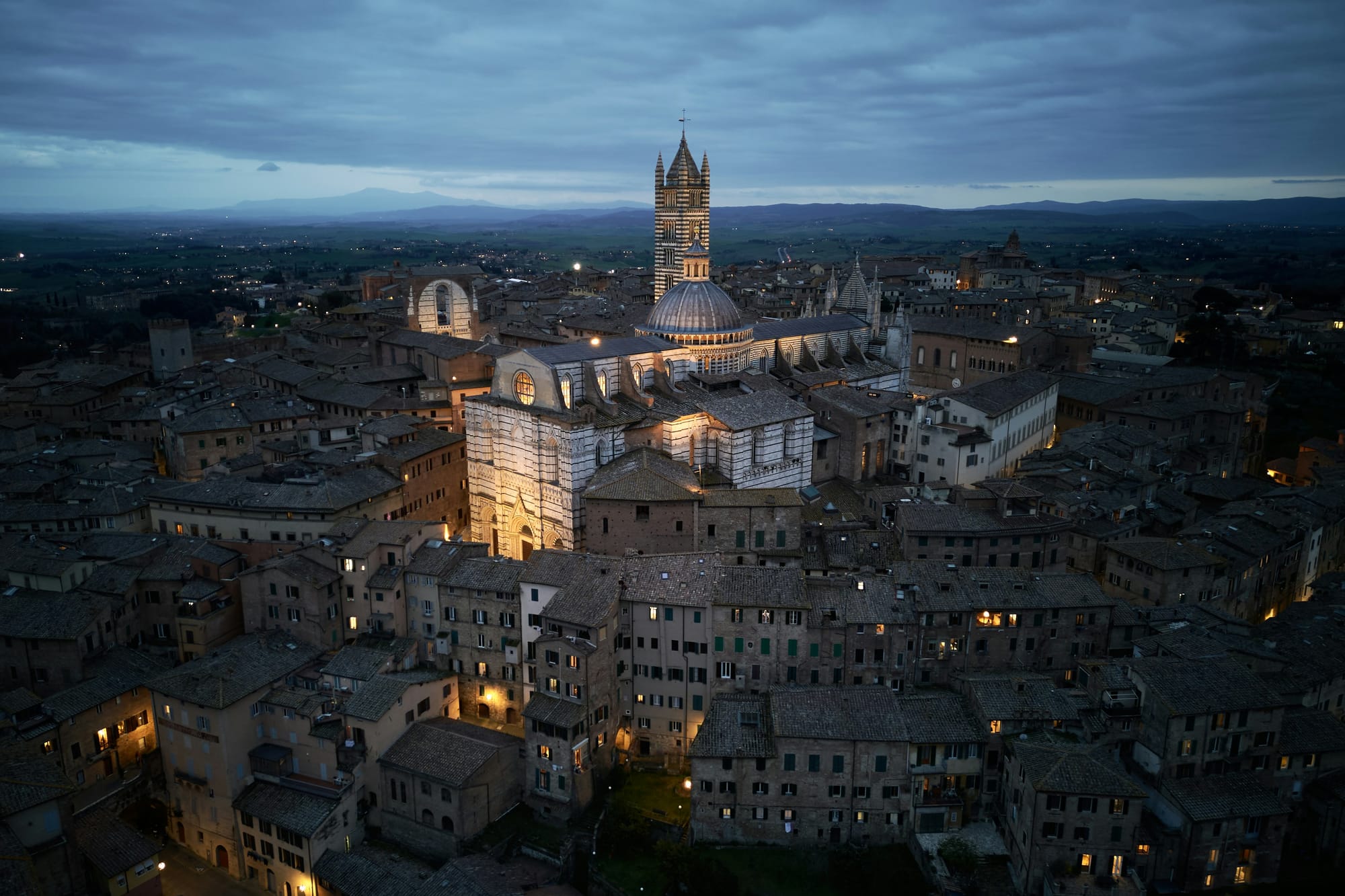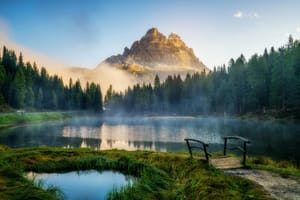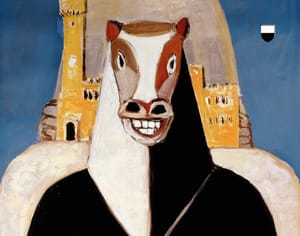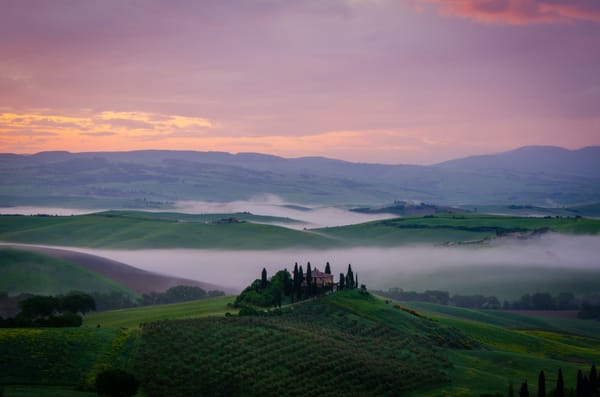Poised atop three hills in the heart of Tuscany, Siena is a city that seems to exist outside of modern time. A magnificent Gothic dream, it stands as a proud testament to its medieval golden age, a period when it was a wealthy, powerful, and artistically innovative rival to its neighbor, Florence. To visit Siena is not merely to see another Italian city; it is to step into a living museum, a UNESCO World Heritage site where history, art, and a fierce local identity converge in a breathtaking display of civic pride.
For the traveler seeking an experience that transcends the typical tourist trail, Siena offers profound rewards. This is a city that demands to be explored slowly, to be understood through its winding cobblestone alleys, its magnificent art, and the deep-seated traditions that still pulsate through the lives of its inhabitants. This guide provides a comprehensive exploration for those wishing to discover the authentic soul of Siena.
A glimpse into Siena’s storied past
Understanding Siena's history is essential to appreciating its present. The city’s zenith occurred between the 12th and 14th centuries when the Republic of Siena was a major European power in commerce, banking, and the arts. Staunchly Ghibelline (supporting the Holy Roman Emperor) in the great medieval political divide, Siena was in constant conflict with the Guelph-aligned Florence. This rivalry fueled not only wars but also an extraordinary civic and artistic competition, as each city strove to outdo the other in beauty and grandeur. The Black Death of 1348 marked the beginning of a slow decline, but the Sienese spirit, and the stunning urban fabric it created, remain perfectly preserved.
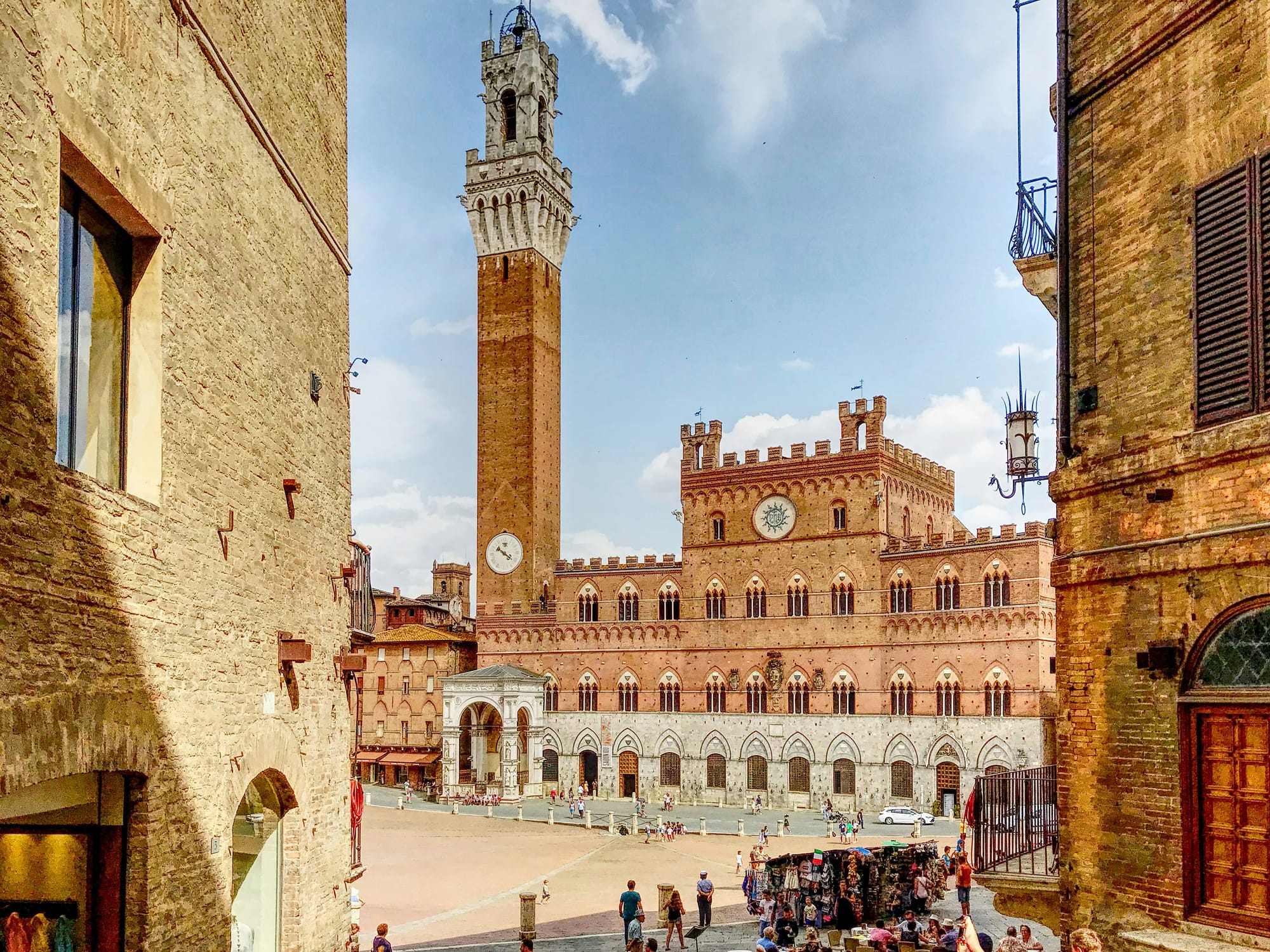
What to see: the unmissable landmarks
Siena’s treasures are concentrated within its well-preserved medieval walls, making it a perfect city for exploration on foot.
The heart of Siena: Piazza del Campo
Any journey into Siena must begin at Piazza del Campo. This is not merely a city square; it is the civic, social, and spiritual heart of Siena, and one of the most magnificent medieval squares in Europe. Its unique, downward-sloping, shell-shaped design is divided into nine sections, representing the "Government of the Nine" that ruled Siena during its medieval peak.
- Torre del Mangia: Dominating the piazza is the slender, elegant Torre del Mangia. Standing at 88 meters (289 feet), climbing its more than 400 steps is a rewarding challenge. The panoramic view from the top is unrivaled, offering a breathtaking perspective of the piazza, the city’s terracotta rooftops, and the rolling Tuscan countryside beyond.
- Palazzo Pubblico (Town Hall): This Gothic masterpiece has served as Siena’s town hall for over 800 years. It is a symbol of the independent Sienese Republic. Inside, the Museo Civico houses some of the most important masterpieces of the Sienese school. The highlight is Ambrogio Lorenzetti's fresco cycle, The Allegory of Good and Bad Government. Painted in the 1330s, this secular masterpiece is a profound political and social statement on civic life, as relevant today as it was centuries ago.
- Fonte Gaia (Fountain of Joy): Adorning the upper edge of the piazza is the Fonte Gaia. The original panels, sculpted by Jacopo della Quercia in the early 15th century, are now preserved in the Santa Maria della Scala museum complex to protect them from the elements. The fountain in the square today is a 19th-century copy, but it remains a focal point of beauty and a popular gathering spot.
The Duomo di Siena: a masterpiece of Italian gothic
If Piazza del Campo is Siena's civic heart, the Cattedrale Metropolitana di Santa Maria Assunta, or the Duomo, is its spiritual soul. It is one of the most stunning and artistically significant cathedrals in all of Italy.
- The façade and interior: The exterior is a dazzling combination of white, green, and red marble, adorned with intricate carvings and sculptures by Giovanni Pisano. But it is the interior that truly astounds. The black and white striped marble columns soar towards a star-dusted blue ceiling, creating a dramatic and unforgettable effect.
- The marble pavement floor: The Duomo’s most precious treasure is its inlaid marble floor, a vast and intricate work of art depicting 56 scenes from history and the Bible. Created by about 40 different artists between the 14th and 16th centuries, it is a masterpiece of its kind. To protect it, the floor is kept covered for most of the year, typically being unveiled only from late June to mid-October. Planning a visit during this period is highly recommended.
- The Piccolomini Library: Located inside the cathedral, this library is a feast for the eyes. The vibrant, perfectly preserved frescoes by Pinturicchio depict the life of Sienese Pope Pius II. The ceiling is equally spectacular, a riot of color and intricate detail.
- Works by great masters: The cathedral also holds significant sculptural works by masters such as Donatello (a bronze St. John the Baptist), Michelangelo (four early statues in the Piccolomini Altar), and Gian Lorenzo Bernini.
The Duomo complex
The experience doesn’t end with the cathedral itself. The "Opa Si Pass," a cumulative ticket, grants access to the surrounding sites, which are essential for a complete understanding.
- Baptistery of San Giovanni: Located beneath the Duomo, the Baptistery features a magnificent hexagonal baptismal font adorned with bronze panels by some of the greatest sculptors of the Renaissance, including Donatello and Lorenzo Ghiberti.
- Museo dell'Opera del Duomo: This museum houses the art and artifacts removed from the Duomo for preservation. Its most important possession is Duccio di Buoninsegna’s Maestà, a double-sided altarpiece that is one of the foundational works of Sienese painting and a landmark in the history of Western art. The museum also provides access to the "Facciatone," the unfinished façade of the planned "New Cathedral," which offers another spectacular view of the city.
- Santa Maria della Scala: Situated opposite the Duomo, this complex was not just a hospital but a multifaceted civic institution that cared for pilgrims, the poor, and orphans for nearly a thousand years. Today, it is a vast museum complex, showcasing Siena's history through art, archaeology, and historical exhibitions.
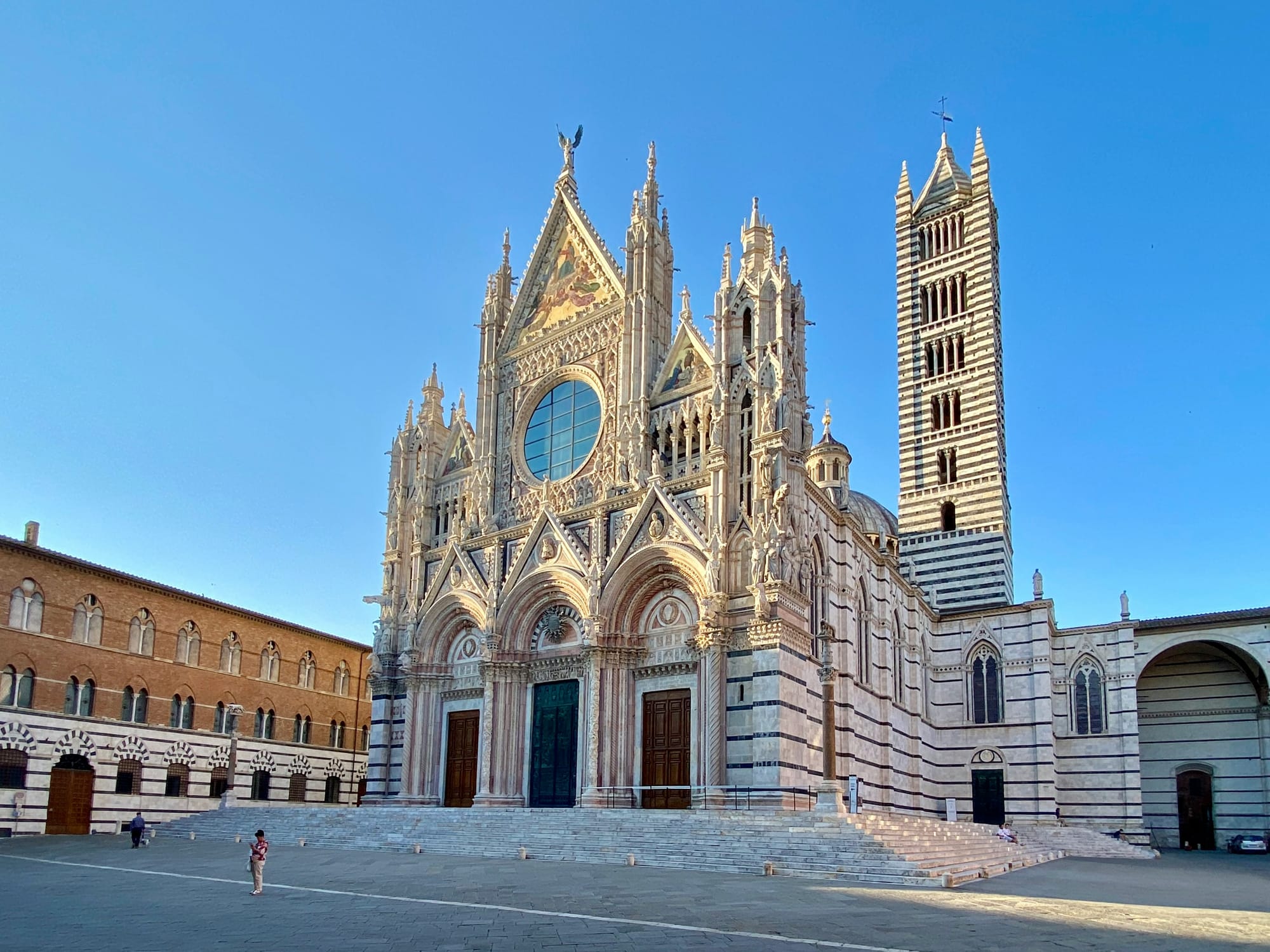
Beyond the monuments: authentic Sienese experiences
To truly know Siena is to look beyond its stone monuments and engage with its living traditions and stunning surroundings.
Exploring the contrade
- Siena is internally divided into 17 Contrade, or city wards. These are not merely administrative districts; they are distinct, family-like communities, each with its own flag, fountain, church, and social identity. Walking through the city, one will notice the emblems of the contrade—the She-Wolf, the Eagle, the Dragon—adorning buildings and street corners. This system is the foundation of the city's social life and the driving force behind its most famous event.
The Palio di Siena
- Twice a year, on July 2nd and August 16th, the Piazza del Campo transforms into a racetrack for the Palio di Siena. This is no mere horse race; it is a passionate, dramatic, and deeply serious event, the culmination of centuries of rivalry between the contrade. Ten of the seventeen contrade are chosen to compete for the coveted silk banner, the Drappellone. The race itself, run bareback, lasts only about 90 seconds, but the pageantry, tension, and celebrations last for days. Witnessing the Palio is an intense and unforgettable experience, but requires planning months, if not years, in advance. Even outside of the Palio days, the spirit of the event permeates the city.
- To learn more about The Palio di Siena → Read this guide, which contains all the information you need to discover the year-long drama of medieval rivalries, secret alliances, and unbridled passion. region.
Day trips into the heart of Tuscany
Siena's strategic location makes it an exceptional base for the cultural traveler to explore the wider region.
- The Val d'Orcia: A UNESCO World Heritage landscape, this valley is the Tuscany of postcards and paintings. It's a land of harmonious, rolling hills, cypress-lined avenues, and ideal towns. Visit Pienza, a masterpiece of Renaissance urbanism conceived by Pope Pius II as the "ideal city," and Montalcino, the hilltop fortress town famous for its prestigious Brunello wine.
- San Gimignano and Monteriggioni: Journey north to San Gimignano, the "Manhattan of the Middle Ages," whose skyline of 14 surviving medieval towers is a testament to the power of its ancient families. Nearby, the perfectly preserved, circular walls of Monteriggioni, mentioned in Dante's Inferno, offer a tangible sense of stepping directly into the 13th century.
- The Abbey of San Galgano: A short drive southwest leads to one of Tuscany's most romantic and mystical sites. The roofless Abbey of San Galgano is a stunning example of Cistercian Gothic architecture, its stone arches open to the sky. Nearby, the Chapel of Montesiepi holds a fascinating artifact: a 12th-century sword embedded in a rock, said to belong to Saint Galgano Guidotti, Tuscany's own "sword in the stone."
- The Chianti Classico wine route: The road connecting Siena and Florence, known as the "Chiantigiana" (SR 222), winds through the heart of the Chianti Classico wine region. For oenophiles and lovers of iconic landscapes, this drive offers endless vineyards, olive groves, and opportunities to visit historic wineries for tastings.
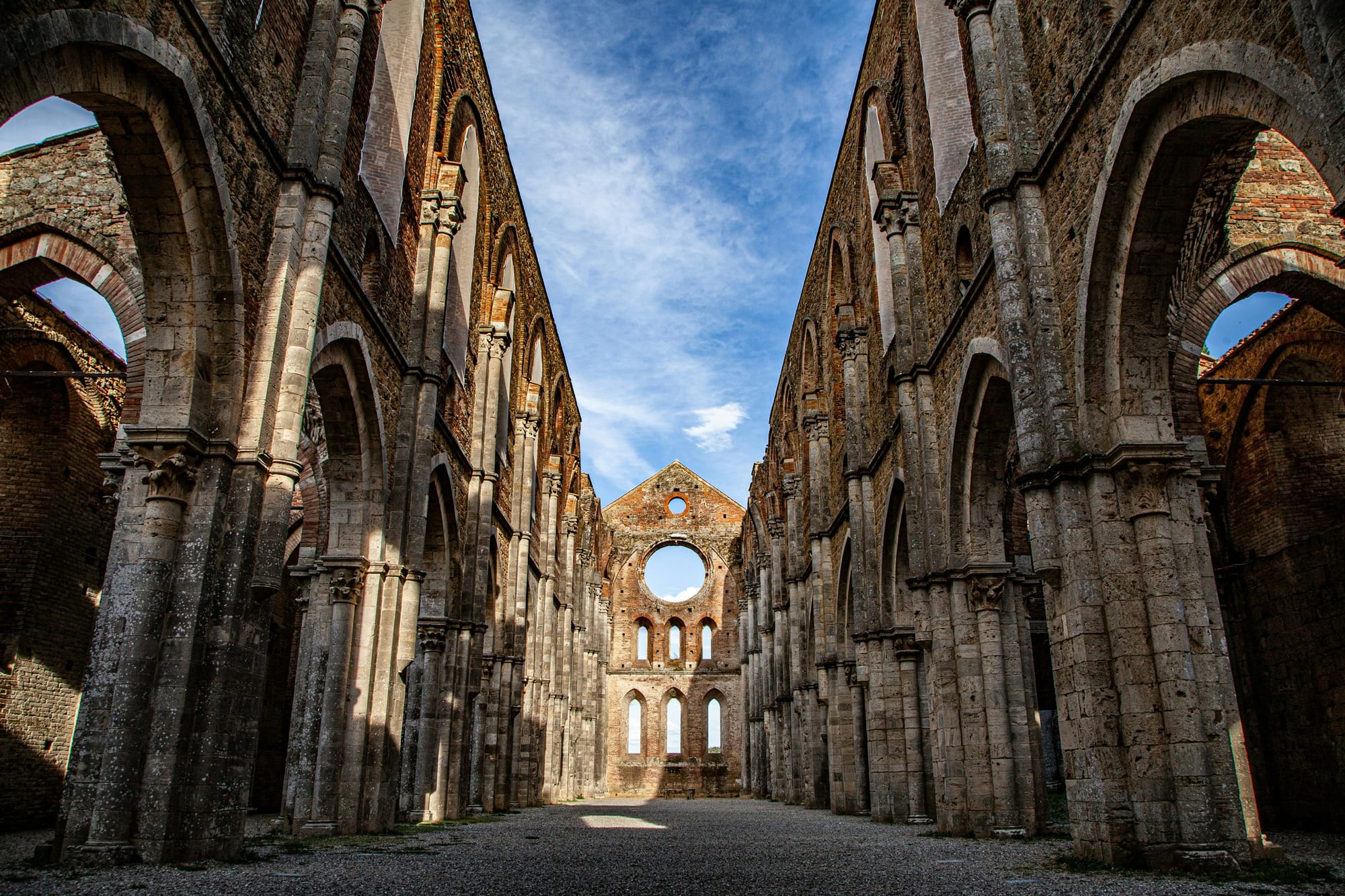
What to eat & drink in Siena
Sienese cuisine is rustic, deeply flavorful, and rooted in the high-quality products of its territory. It is a fundamental part of the cultural experience.
Savory dishes
Dining in a traditional osteria or trattoria reveals the soul of Sienese food. Look for these essential dishes:
- Pici all'Aglione: Pici is the signature Sienese pasta, a thick, hand-rolled spaghetti. Its dense, chewy texture is a perfect vehicle for aglione, a rich and flavorful sauce of slow-cooked garlic and tomato.
- Pappardelle al sugo di Cinghiale: Wide egg-noodle pasta served with a robust, slow-simmered wild boar ragù, a classic taste of the Tuscan woodlands.
- Cinta Senese: This ancient, prized breed of local pig, recognizable by the white "belt" around its shoulders, produces exceptional cured meats. A platter of Prosciutto di Cinta Senese or salami is a perfect start to any meal.
- Ribollita: A hearty and historic bread and vegetable soup, its name meaning "re-boiled." It's a cornerstone of Tuscan cucina povera (peasant cooking) and is deeply satisfying.
The wines of the territory
Siena sits at the nexus of some of Italy's most important wine zones.
- Chianti Classico: The territory immediately north of Siena produces this famous Sangiovese-based red wine, marked by the iconic black rooster (gallo nero) seal.
- Brunello di Montalcino: From the south, this is one of Italy's most prestigious and age-worthy red wines, made from 100% Sangiovese Grosso grapes.
- Vernaccia di San Gimignano: A crisp, refreshing white wine with ancient origins, it was the first wine in Italy to be granted DOC status in 1966.
Unforgettable sweets
Siena's confectionary tradition is legendary. No visit is complete without tasting its iconic desserts.
- Panforte: A dense, chewy cake of honey, nuts, candied fruit, and spices that dates back to the Middle Ages.
- Ricciarelli: Soft, delicate almond biscuits dusted with powdered sugar, with a delightful marzipan-like texture.
- Cantucci: These classic crunchy almond biscuits are traditionally served at the end of a meal to be dipped into a glass of Vin Santo, a sweet dessert wine.
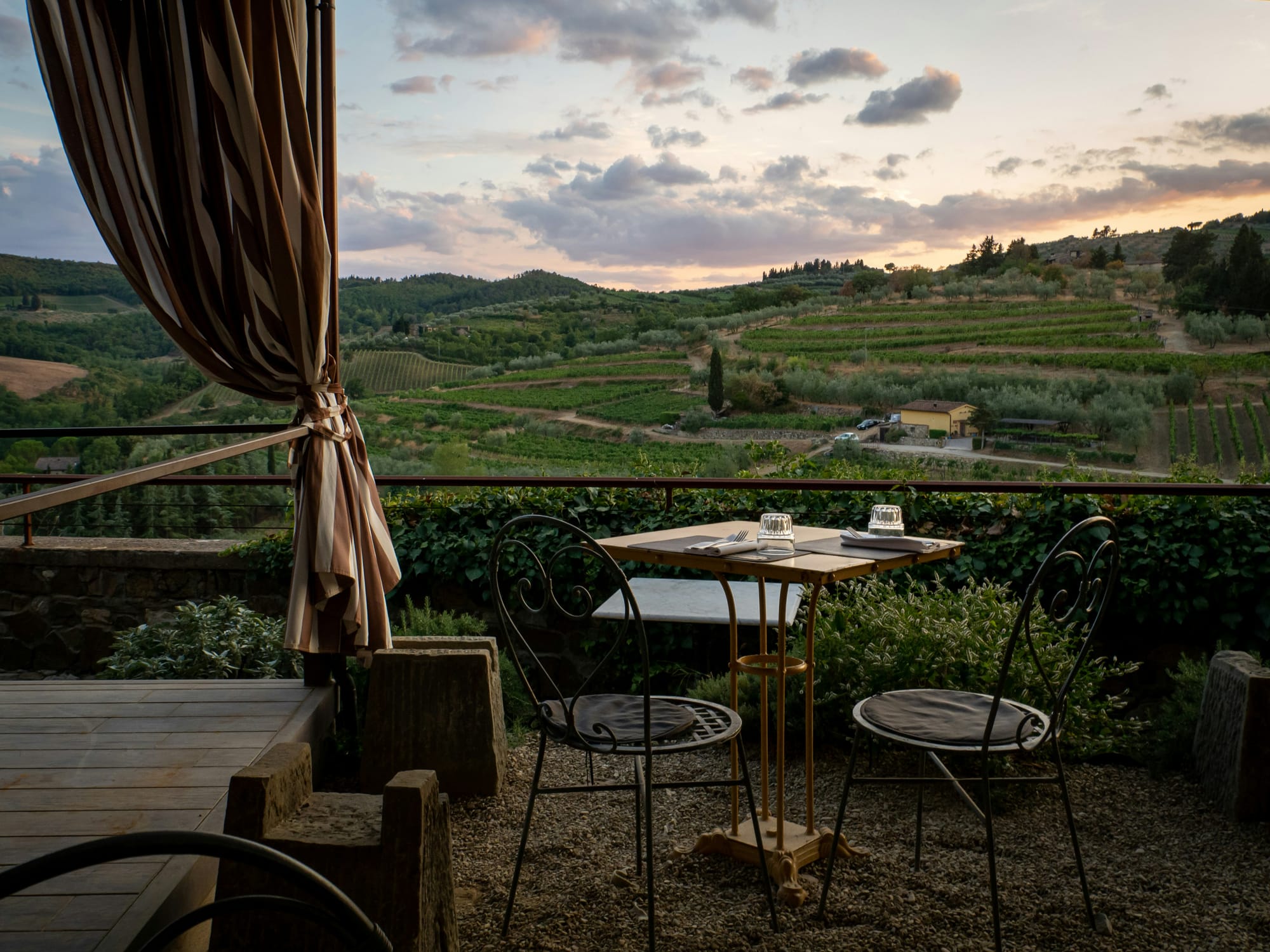
Practical Siena travel guide: plan your perfect trip
Meticulous planning ensures a seamless and enriching journey. Here is the essential information for organizing a visit to Siena.
Getting to Siena
- By train: Siena's train station is located at the bottom of a hill outside the city center. A series of escalators connects the station to the area near Porta Camollia, from where it's a 20-minute walk to the Campo. Trains run frequently from Florence and Rome (with a change).
- By bus: The bus is often a more convenient option, especially from Florence. The bus station is located at Piazza Gramsci, much closer to the historic center.
- By car: Driving to Siena is straightforward, but driving in Siena is not. The entire historic center is a ZTL (Zona a Traffico Limitato), or limited traffic zone. Non-resident cars are forbidden. It is best to park in one of the large public lots outside the city walls and walk or take a local bus into the center.
Getting around Siena
- The best way to explore Siena is on foot. The city's medieval core is a maze of captivating alleys best discovered at a slow pace. Be aware that the city is built on hills, meaning many streets are steep. Comfortable, supportive footwear is non-negotiable. For longer distances or to avoid the steepest climbs, a network of local minibuses navigates the narrow streets, and public escalators help ascend from the lower parts of the city.
Best time to visit
- Spring (April-May) and Autumn (September-October): These seasons offer the best combination of pleasant weather, fewer crowds than summer, and the full beauty of the Tuscan landscape.
- Summer (June-August): The city is alive with energy, especially around the Palio dates. However, it can be very hot and crowded.
- Winter (November-March): For those seeking a more solitary experience, winter is ideal. The city is quiet, atmospheric, and offers a glimpse into everyday local life, though the weather can be cold and wet.
How long to stay
- A quick day trip from Florence allows one to see the main sights, but it barely scratches the surface. To truly appreciate Siena's atmosphere, explore its museums without rushing, and soak in its unique culture, a stay of at least two to three nights is highly recommended. This also provides a perfect base for exploring the surrounding Tuscan countryside.
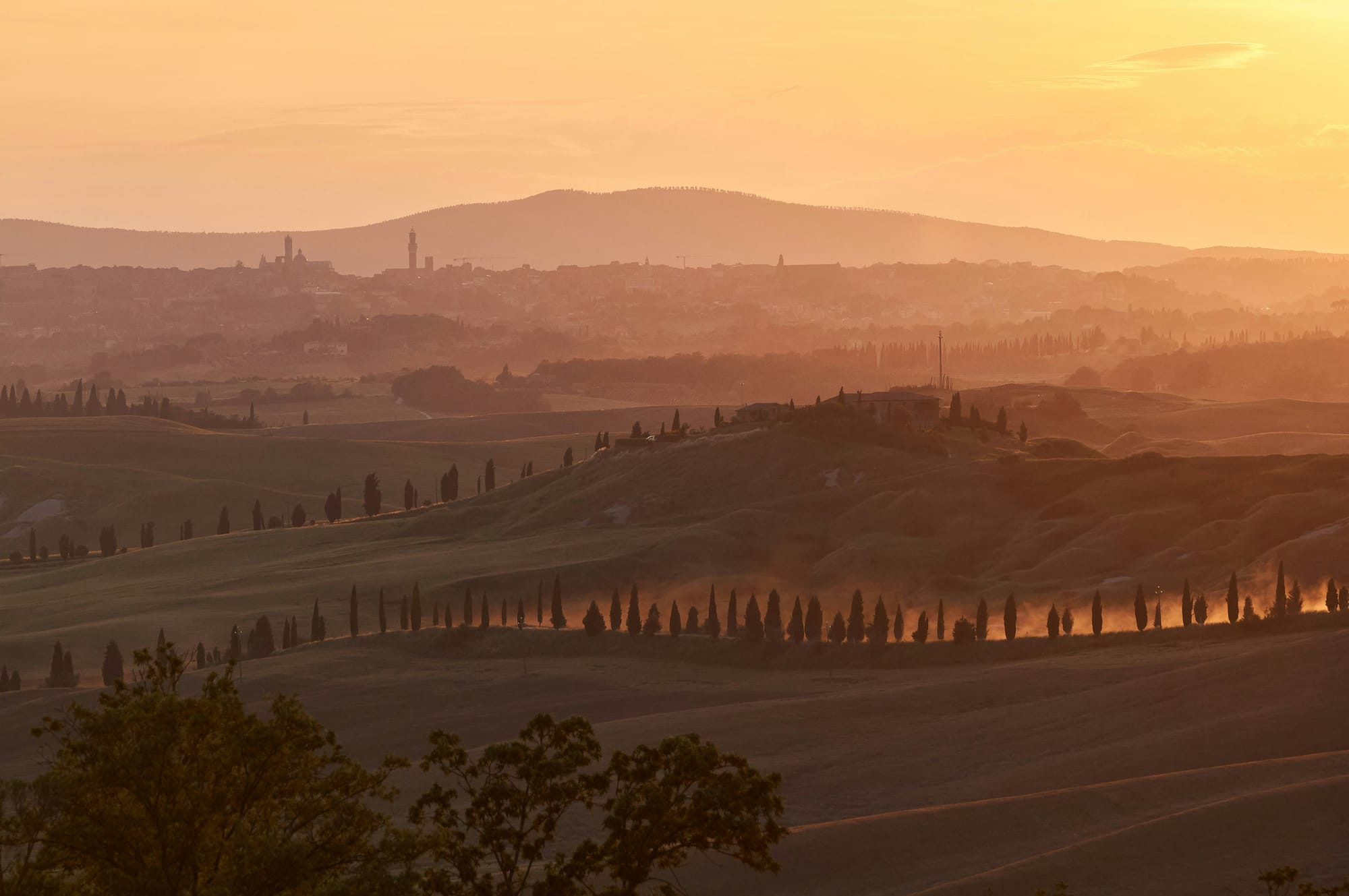
Frequently asked questions about Siena (FAQ)
Is Siena a good base for exploring Tuscany?
- Absolutely. Its central location makes it an ideal base for day trips to the Val d'Orcia, San Gimignano, Monteriggioni, the Chianti region, and even Florence, offering a perfect balance between city life and countryside exploration.
How much time is needed to visit Siena?
- While the main sights can be seen in one long day, this would be a disservice to the city. A minimum of two full days is recommended to see the major landmarks without rushing. A stay of three to four days allows for a deeper exploration of the city's hidden corners and for at least one day trip.
Is Siena very hilly and difficult to walk?
- Yes, the city is built on three hills, and its streets are often steep and paved with cobblestones. Comfortable, supportive footwear is absolutely essential. While challenging for those with mobility issues, the city's compact nature means most destinations are not far apart.
When is the best time to see the uncovered Duomo floor?
- The magnificent marble floor of the Siena Cathedral is typically uncovered for a limited period each year. The dates for 2025 are from June 27th to July 31st and again from August 18th to October 15th. It is highly recommended to plan a visit during these times, but expect larger crowds.
Should tickets for attractions be purchased in advance?
- Yes, especially during peak season (May-September) and for the period when the Duomo floor is uncovered. Purchasing the "Opa Si Pass" online in advance for the Duomo Complex is highly recommended to save time. Booking tickets for the Torre del Mangia climb is also wise as entry is timed and slots are limited.
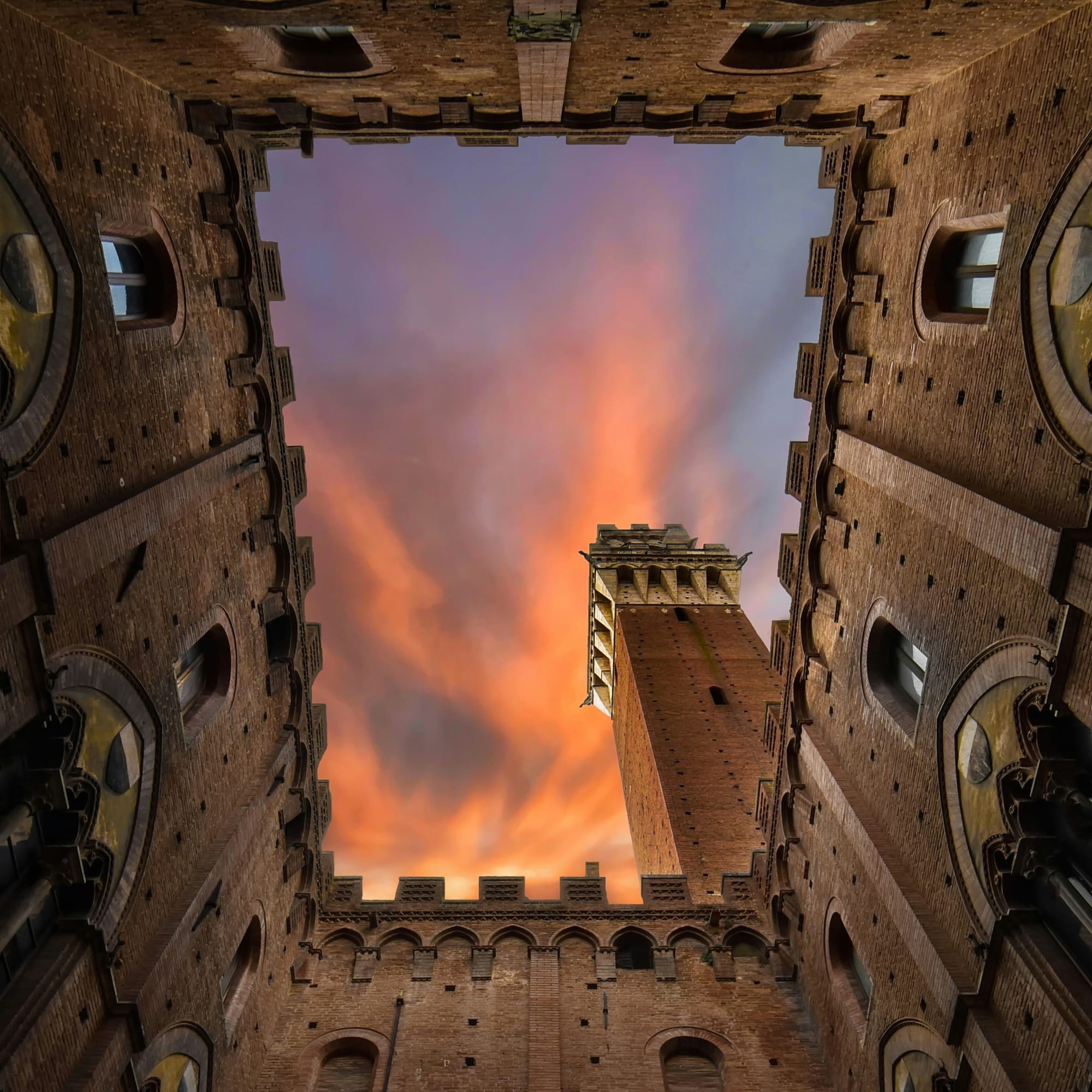
Siena is more than a destination; it is an immersion. It is a city that has masterfully preserved its medieval soul without becoming a sterile relic. The grandeur of its art and architecture is matched only by the intimacy of its neighborhood life, a life that still revolves around the ancient loyalties of the contrade. To walk its streets is to feel the echoes of history underfoot, to witness the enduring rivalry with Florence in the soaring height of a tower, and to understand the meaning of civic pride in the breathtaking beauty of a public square.
A visit here is a powerful reminder that some places do not need to chase modernity to remain profoundly relevant. Siena offers the discerning traveler a rare gift: the chance to slow down, to look deeply, and to experience a city that is not just a highlight on a map, but a complete, captivating, and utterly timeless world unto itself. It is a journey that enriches the mind and captures the heart, leaving an indelible impression long after the return home.
To learn more about Tuscany → Read this guide, which contains all the information you need to discover the region.
Start here below to plan your visit to Florence, where you can experience the charm of the city's Renaissance art and architecture, as well as the art and culture of its museums and galleries.
